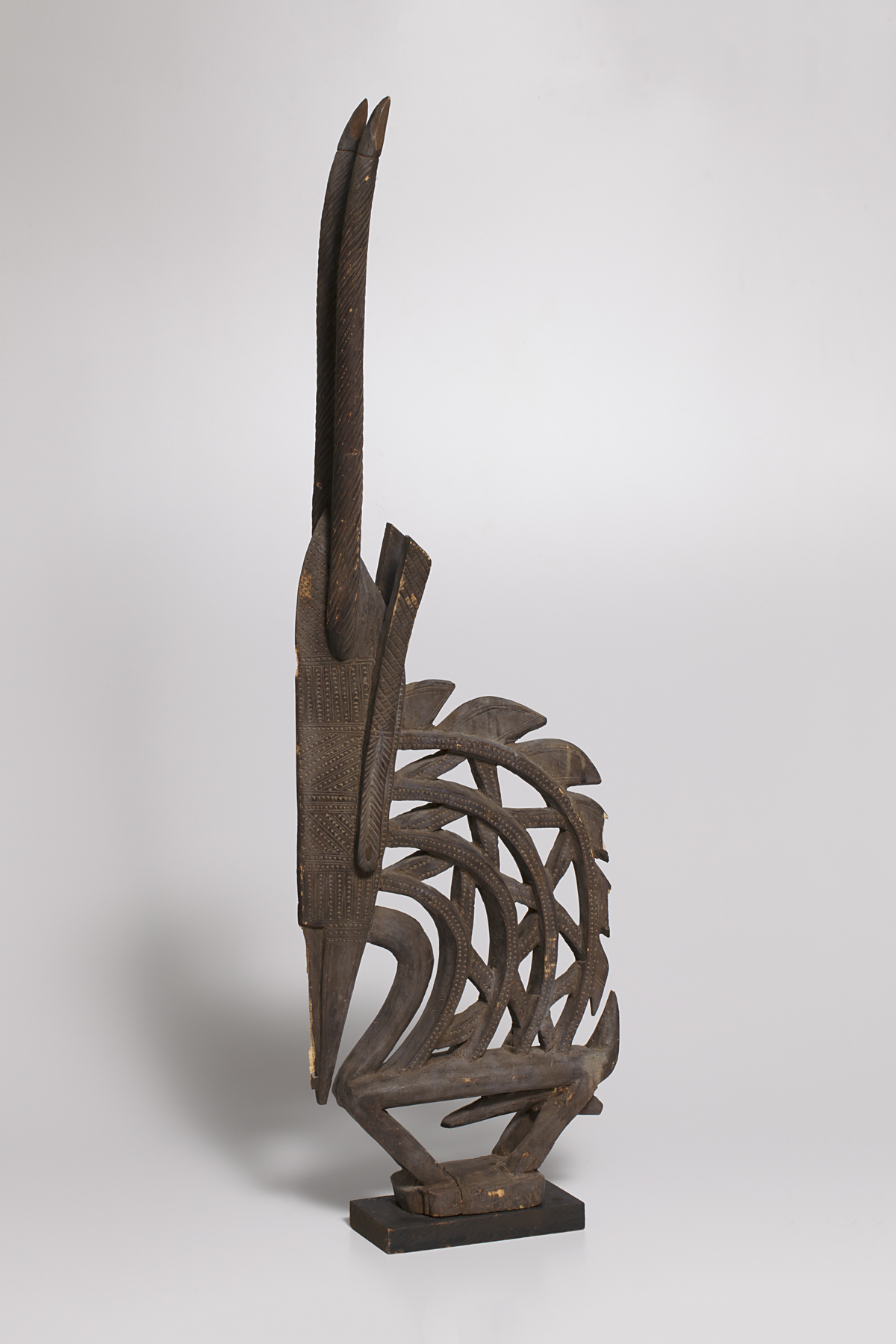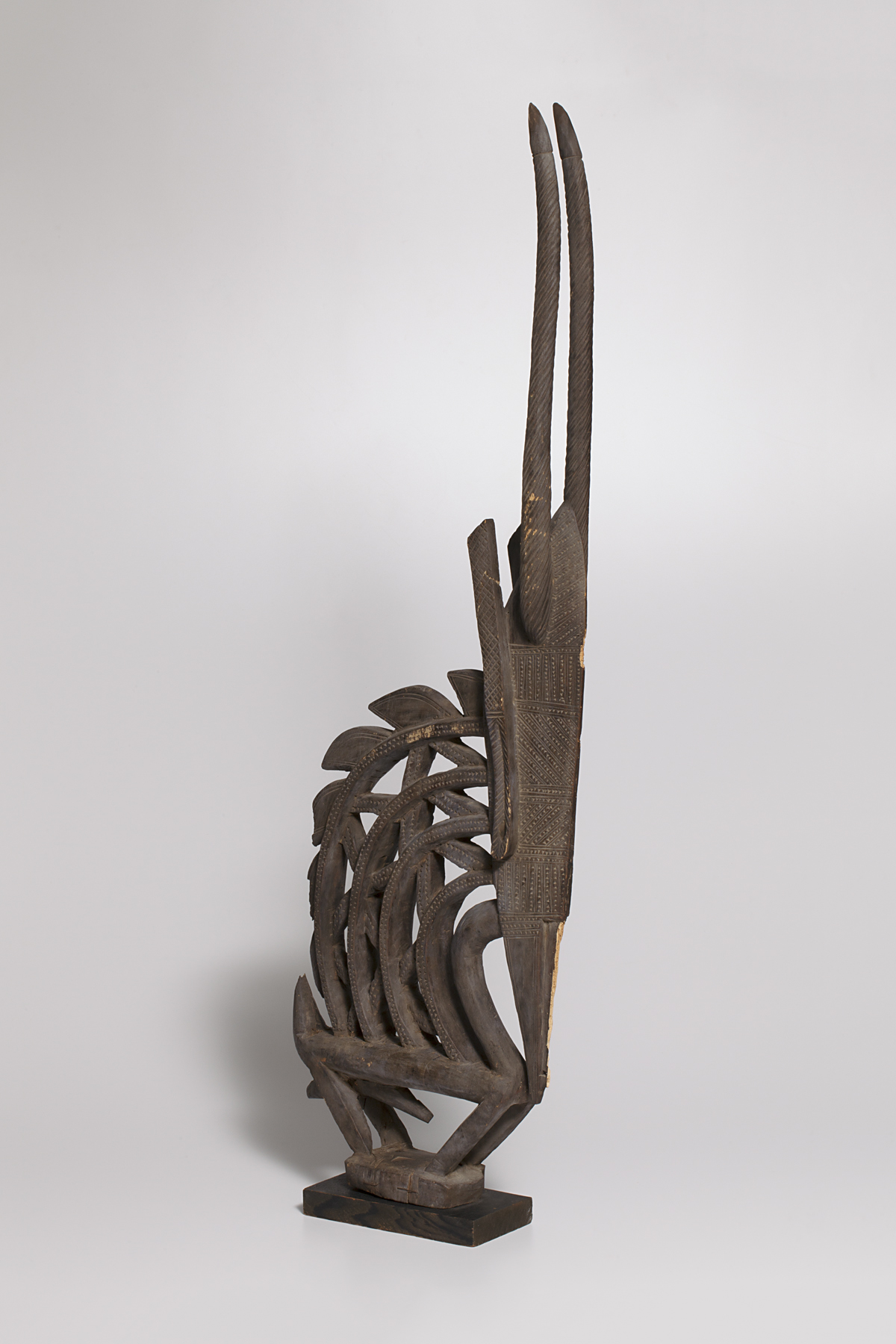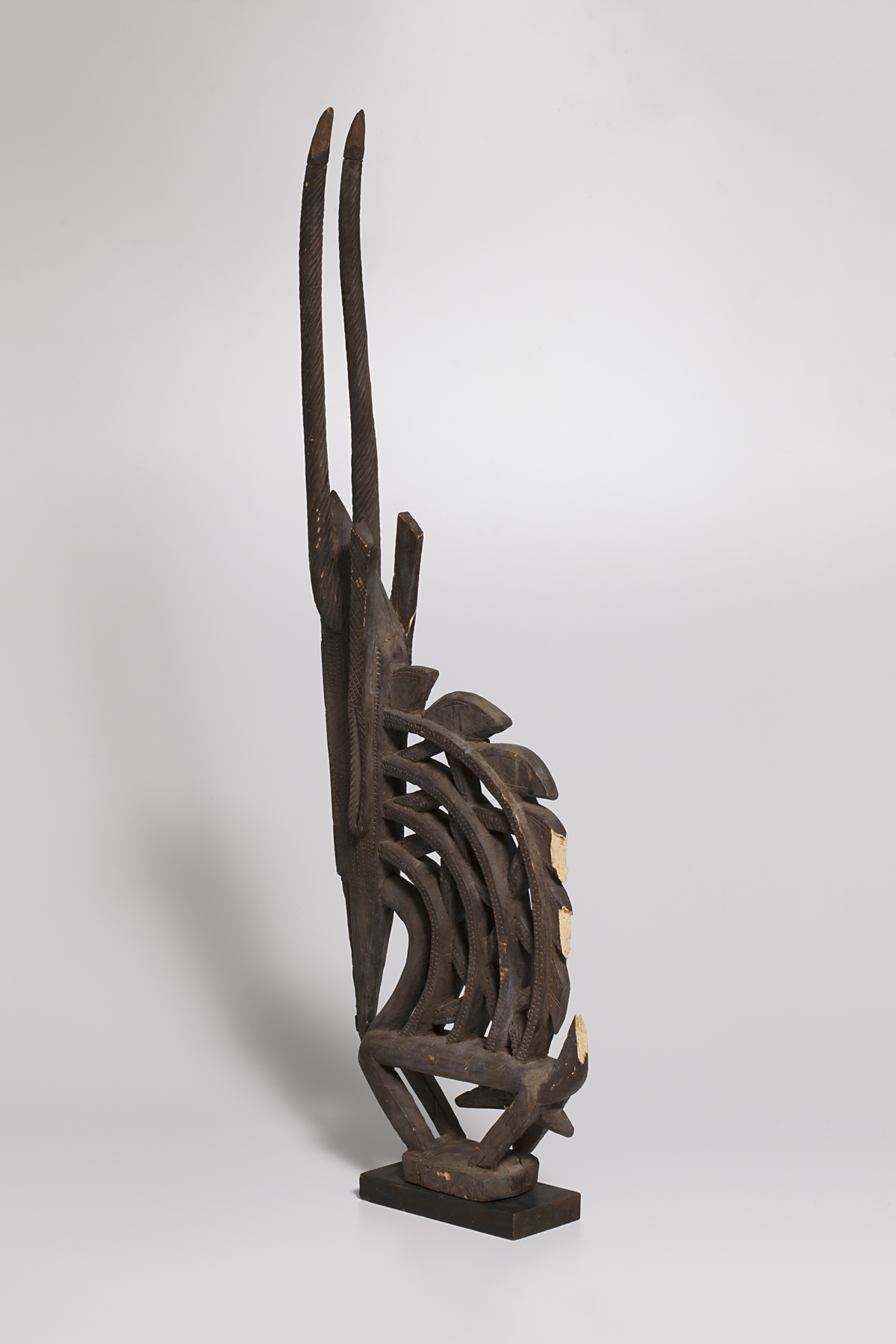Chi Wara headdress, unrecorded Bamana artist
Artwork Overview
unrecorded Bamana artist, artist
Chi Wara headdress,
early-mid 1900s
Where object was made: Mali
Material/technique: wood; staining; carving
Dimensions:
Object Height/Width/Length (Height x Width x Length): 105.5 x 9.5 x 32 cm height does not include second base
Object Height/Width/Length (Height x Width x Length): 41 9/16 x 3 3/4 x 12 5/8 in
Object Height/Width/Length (Height x Width x Length): 105.5 x 9.5 x 32 cm height does not include second base
Object Height/Width/Length (Height x Width x Length): 41 9/16 x 3 3/4 x 12 5/8 in
Credit line: Gift of Larry W. Welling
Accession number: 2007.2804
Not on display
If you wish to reproduce this image, please submit an image request




